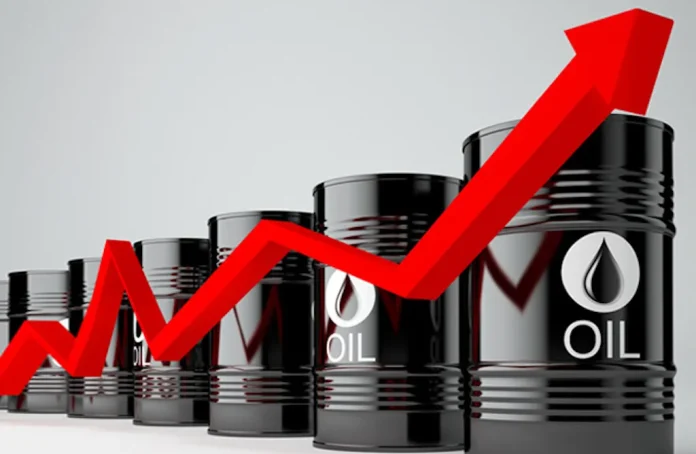The value of crude oil increased within global commodity markets following pronouncements by U.S. President Donald Trump, who issued warnings of amplified tariffs against Russian oil purchasers concerning ceasefire initiatives in Ukraine, and furthermore, signaled the potential for unprecedented aerial bombardment of Iran should it decline to engage in a nuclear agreement.
Brent crude witnessed an approximate 0.69% rise, trading at $73.22 per barrel, an increase from $72.76 at the preceding session’s closure. The U.S. benchmark, West Texas Intermediate (WTI), experienced a roughly 0.66% elevation, concluding at $69.80 per barrel, compared to its previous session’s close of $69.36.
On Sunday, Trump issued a threat of unprecedented aerial bombardment against Iran, should it decline to participate in negotiations with Washington concerning its nuclear program, marking the most explicit indication of potential military action since his assumption of office in January.
“If they do not enter into a deal, there will be bombardment. It will be a scale of bombardment they have never previously witnessed,” Trump conveyed during an interview with NBC News.
He also expressed, on Sunday, his “considerable displeasure” towards Russian President Vladimir Putin, regarding comments made by the latter criticizing the credibility of Ukrainian President Volodymyr Zelenskyy.
Putin, on Friday, advocated for the establishment of a “transitional administration” within Ukraine, and proclaimed that the Russian military would “eliminate” Ukrainian forces. Trump articulated that these remarks elicited “considerable displeasure” as he endeavors to mediate a truce to cease the bloodshed in Ukraine.
He further signaled his intent to impose sanctions on Russia’s oil sector, should he perceive that the Kremlin is not contributing to efforts aimed at securing a ceasefire in Ukraine.
“If Russia and I are unable to broker a deal to halt the bloodshed in Ukraine, and if I attribute blame to Russia—which may or may not be justified—but if I do attribute blame to Russia, I will enact secondary tariffs on oil, on all oil originating from Russia,” he stated.
“This would imply that entities purchasing oil from Russia would be barred from conducting business within the United States,” he added. “A 25% tariff will be levied on all oil, a 25- to 50-point tariff on all oil.”
“U.S. sanctions targeting Iran’s oil industry appear to be exerting influence, with reports indicating that at least 11 U.S.-sanctioned tankers, laden with Iranian oil, are idling off the coast of Malaysia,” noted Daniel Hynes, a senior commodity strategist at the Australia and New Zealand Banking Group, in a report.
“Several of these vessels, containing approximately 17 million barrels, have remained stationary for over a month. This situation could be exacerbated by U.S. initiatives to restrict Russian oil trade,” Hynes added.
“Trump has threatened secondary tariffs on Russian oil should a ceasefire with Ukraine fail to materialize. This follows Russia’s proposal to temporarily place Ukraine under U.N.-sponsored external governance,” he further stated.
Hynes cautioned about the ongoing tightening of the market. According to data released by the Energy Information Administration (EIA) late Wednesday, inventories diminished by approximately 3.3 million barrels, reaching 433.6 million barrels, contrary to market expectations of a 1.5 million-barrel increase.














